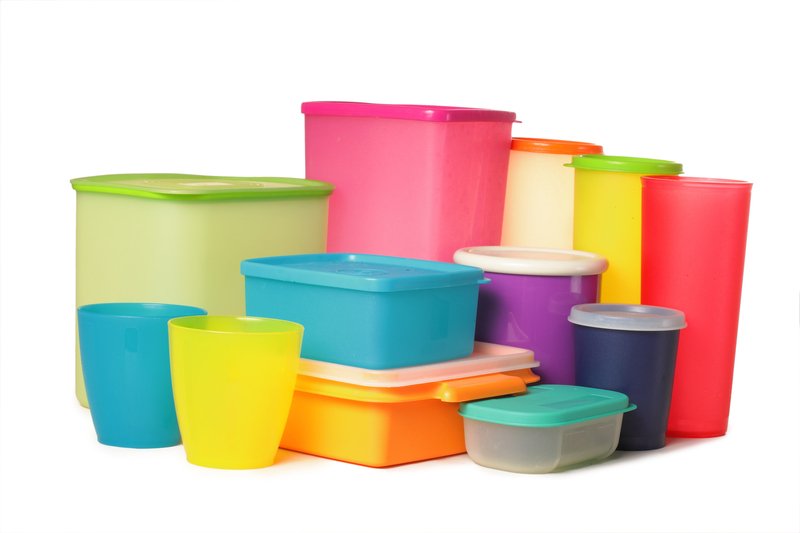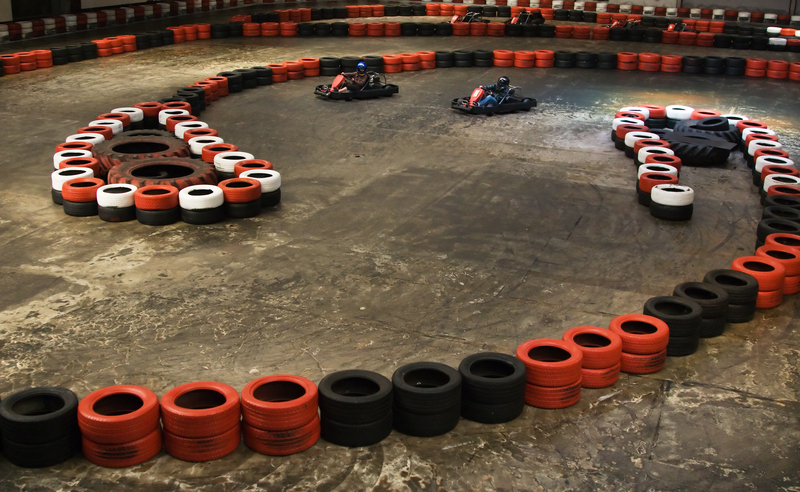Make Your Own Sustainable Art Using Everyday Refuse
Art is all around us, sometimes hiding within the most unexpected places--like our trash bins! With society facing ever-growing environmental issues, the concept of creating sustainable art from everyday refuse is not only a creative pursuit but also an inspiring solution towards greener living. Wondering how to transform waste into treasure? Dive into this comprehensive guide and discover how you can use common household discards to craft unique, eco-friendly masterpieces that tell a story while helping the planet.

Why Create Sustainable Art From Everyday Refuse?
Before we get our hands dirty, it's essential to understand the value of sustainable art. By repurposing materials, you divert waste from landfills, reduce resource consumption, and spark creative possibilities with items you might normally throw away. Eco art brings environmental awareness, inspires sustainable choices, and gives a powerful voice to both the artist and the planet.
- Reduces landfill waste: Gives a second life to items destined for the trash.
- Saves money: Craft with free or low-cost materials from your home.
- Fosters creativity: Challenge yourself to see beauty and potential in the everyday.
- Raises awareness: Your art can start vital conversations about sustainability.
So, whether you're an artist aiming for sustainability, a parent teaching eco-values, or simply a curious beginner, DIY sustainable art offers rewarding pathways.
Getting Started: Collecting Refuse For Your Art
The first step in making sustainable art from household waste is learning what materials to save. Almost anything can become art material if viewed creatively. Here's a helpful list to start a supply:
- Cardboard (shipping boxes, cereal boxes)
- Plastic containers (bottles, yogurt cups, lids)
- Glass jars and bottles
- Metal cans (soda or food cans, aluminum lids)
- Old newspapers and magazines
- Fabric scraps (old clothes, socks, or towels)
- Egg cartons, paper tubes, and packaging
- Broken jewelry, wires, or electronics
- Corks and bottle caps
Pro Tips:
- Rinse and dry your materials before storing them.
- Designate a box or basket for clean, usable refuse.
- Think seasonally--collect unique holiday packaging, gift wrap, or food containers.
Eco-Friendly Art Techniques to Try
One of the joys of sustainable art projects is their boundless adaptability. Whether you're interested in sculpture, collage, jewelry, or mixed media, here are some time-honored and innovative techniques:
1. Collage and Assemblage
Using torn papers, cardboard, and fabric scraps, create stunning collages and assemblages on canvas or cardboard. Layer colors, add text from magazines, or use packaging lettering to form new messages. Try incorporating three-dimensional items (like bottle caps or old keys) for a tactile twist.
2. Upcycled Sculpture
Build sculptural pieces from larger items such as plastic bottles, cans, or styrofoam, securing them with glue, wire, or tape. Sculptures can be abstract or representational--a roaring lion from tin cans, an eco-friendly lamp from glass jars, or whimsical robots from e-waste.
3. Recycled Jewelry
Fashion distinctive jewelry from discarded materials like beads made from rolled magazine pages, earrings crafted from soda tabs, or pendants shaped from broken pendulum clocks. This not only looks beautiful but sends a message about conscious consumption.
4. Printmaking with Refuse
Use textured waste materials as printing blocks: bubble wrap, old combs, or corrugated cardboard can be used to make patterns in paint or ink for striking backgrounds or textile prints.
5. Textile Art
Repurpose old T-shirts or linens into wall hangings, patchwork cushions, or even woven art. Combine with threads unraveled from old clothes for a rustic, layered effect. This brings texture and sustainability together in beautiful form.
Step-by-Step Project: Make a Recycled Art Collage
To demonstrate how impactful art from everyday refuse can be, let's walk through a project ideal for all ages and skill levels.
Supplies Needed:
- Cardboard base (cereal box, shipping box cut to size)
- Old magazines and newspapers
- Fabric scraps, bottle caps, plastic lids
- Glue (eco-friendly if available)
- Scissors
- Paint, if desired (optional)
Instructions:
- Prep your materials: Tear or cut magazines and newspapers into interesting shapes, and organize small refuse items by color or size.
- Create the background: Glue large pieces of paper or fabric to cover the cardboard. Layer for texture.
- Design your composition: Arrange refuse pieces on the board, considering color, balance, and message. Experiment until you're happy!
- Secure items: Affix all pieces with glue. Press down firmly.
- Personalize: Add paint, markers, or handwritten words to complete the story.
- Display: Mount your sustainable art collage where it inspires conversation--or give it as a green gift!
Variation Ideas:
- Focus on a theme such as "Ocean Life" or "Urban Jungle."
- Make it interactive--incorporate pieces that move.
- Try a self-portrait using only household refuse!
Inspiration: Artists Who Turn Trash into Art
Many renowned artists use art from waste to highlight ecological messages. Here are a few to fuel your creativity:
- Vik Muniz: Brazilian artist renowned for his intricate pictures crafted from recycled paper, plastic, and even garbage itself.
- El Anatsui: Transforms bottle caps and scrap metals into monumental sculptures.
- Jane Perkins: Makes colorful portraits from found objects and household refuse.
- Bordalo II: Street artist known for large-scale animal murals assembled from urban trash.
Study their work online or at exhibitions for fresh ideas--let their innovation become your springboard!
Tips for Eco-Conscious Creativity
- Choose nontoxic art supplies where possible. Look for water-based paints and natural adhesives.
- Share and swap materials with friends or local schools--what you discard may spark someone else's art.
- Highlight the message in your work. Use titles, statements, or display placards to explain the story behind each piece and encourage sustainable habits.
- Document your process online to inspire others.
- Host upcycled art workshops in your community or virtually--spread the movement beyond your home.
How to Make Sustainable Art at Home: Common Questions
What household items are best for sustainable art projects?
Commonly discarded items are ideal! Think cardboard, glass and plastic bottles, metal cans, paper tubes, egg cartons, plastic wrappers, fabric scraps, buttons, broken toys, and even outdated tech parts.
Is it safe to use all types of refuse in art?
Stick to clean, non-toxic materials. Avoid sharp, moldy, or chemical-contaminated waste, and be cautious of small items if crafting with children.
How do I clean and store reused materials?
Wash, rinse, and thoroughly dry all materials before storing in a ventilated, moisture-free bin or bag. Avoid storing food containers that could attract pests unless sanitized.
How can I make my recycled artwork more durable?
Use strong adhesives, reinforce pieces with extra cardboard or wire, and consider sealants like Mod Podge (non-toxic) or natural beeswax for finishing.
Can I sell sustainable art made from refuse?
Absolutely! There's a growing market for eco-friendly art. Be transparent about your process and materials--buyers often value the environmental story as much as the art itself.
Educational Benefits of Art Made From Refuse
Crafting art from everyday waste isn't just eco-friendly--it's deeply educational. It teaches resourcefulness, critical thinking, and environmental ethics. Teachers and parents can use these projects to:
- Integrate science lessons about recycling and earth's resources.
- Encourage fine motor skills and creativity in children.
- Promote discussion about waste, pollution, and conservation.
- Foster teamwork through group installations or community murals.
Expanding Your Sustainable Art Practice
Join Upcycling Communities
No artist is an island! Search for local or online groups focused on recycled art and upcycling. Participate in challenges, attend workshops, and share your own projects for mutual inspiration.
Enter Sustainable Art Competitions
Many organizations and galleries now recognize and award eco-conscious art. Submit your work for a chance to gain exposure and connect your message with broader audiences.
Host an Exhibition or Pop-Up Market
Exhibit your sustainable artworks at community centers, cafes, or outdoor festivals. Sell smaller pieces or teach on-site workshops to further champion the sustainable art movement.

Conclusion: The Art of Sustainability
Creating sustainable art using everyday refuse is an exciting, planet-friendly journey blending artistry and activism. By viewing waste as raw material for creative expression, you help conserve resources and challenge others to rethink their relationship with the environment. Remember, the only limit is your imagination--and the world needs more imaginative, sustainable solutions now than ever before.
Start collecting, start creating, and let your next masterpiece be a statement for our earth!
Related Resources and Further Reading
- EcoArtSpace - Community and resources for sustainable artists worldwide.
- Upcycle That - Inspiration and tutorials for upcycled art and crafts.
- Earth911 - Recycling guides and environmental news.
- Tate's Guide to Eco Art - Explore eco-art's history and artists.
- Inhabitat - Sustainable design news and projects.
Ready to begin your sustainable art journey? Share your creations and join the movement using #SustainableArtFromRefuse!